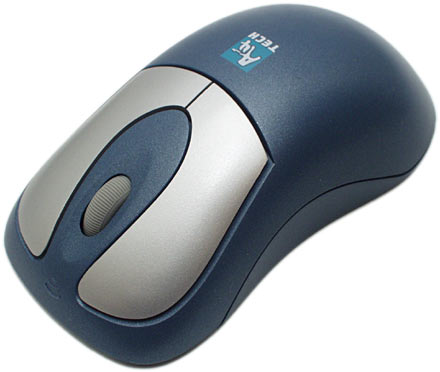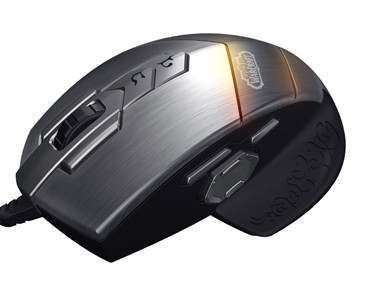Computer Operator Class 1
Icon
An icon is the graphical representation of a file, folder or application. We can open the object it represents by double clicking icon or perform different actions by right clicking on it.Desktop
Desktop is the workspace or working environment in windows. Windows, icons and other objects are placed on desktop and managed there.
Window
A window is framed area in desktop. Microsoft Windows operating system presents everything – the file contents, folders and applications in window. A window that contains an application is application window. Similarly there are document window, folder window and some windows system windows.
A window consists of Title bar (Control Box, Title, Minimize, Maximize/Restore, Close button), Menu bar, Tool bars, Working area, Scroll Bara, Status bar.
Taskbar
A bar usually at the bottom of Windows desktop that contain the icons of opened applications, a start button and system tray is known as taskbar.Mouse and Mouse Actions
Mouse has a button to select and perform different action known as primary button. A mouse may have more than one button (modern mice have two or more button and a scroll wheel button). The second button on mouse that is used to open context menu or short cut menu is secondary button. Wheel can be used to scroll the window if it has vertical scroll bar.

Point
Point is a mouse action. When you place the mouse pointer over an icon or object, it is called pointing the icon or object.Click
Click is the operation of pressing the primary mouse button once over an icon or any other object.Double Click
Pressing the primary mouse button two times over an icon is known as double click or clicking an object two times is double click.Triple Click
Clicking an object three times is called triple click. It might be rare but there some operations you can perform in some applications with triple click. For example triple click on a word in MS Word selects the paragraph.Drag
Drag is to point to an object, press primary mouse button and move mouse without releasing mouse button. Drag action is performed to move objects, draw, copy objects and so on.Drop
To release mouse button when you are dragging is known as drop.Context Menu or Popup Menu
Microsoft Windows and Windows based applications use context menu or popup menu or shortcut menu to perform many actions easily. This menu is produced when you press right mouse button (secondary button). The options on menu are displayed based upon which object you right clicked and on which context the right button is clicked. So it is named context menu.Context Menu on Start Button

Context Menu on Desktop

Context Menu on Taskbar

Context Menu on System Tray

Context Menu on Title Bar

==================================================
Computer Operator Class 2
Some basic terms, mouse and mouse actions were covered on Class 1. Today in Class 2 we are talking about standard method for command operation in Windows Operation System, Creating New folders, files and starting applications in Windows.
Standard Method for Command Operation
Operating a computer is essentially communicating with computer and making it to perform instructed tasks. So to instruct a computer system, operating systems provide different ways in interface. Microsoft Windows offers a number of methods for command operation. some of the major ones are pointed out as below:
Menu Bar
Windows provides menu bars with various menus in it. A menu is a collection of commands grouped according to the category they fall in. You can click the menu to issue a command through menu bar.
Menu can be accessed using:- mouse to click on menu
- Press Alt key on keyboard to activate menu bar then use arrow keys and Enter
- Press F10 key on keyboard to activate menu then use arrow keys and Enter

Toolbar
Toolbar presents more frequently used commands as button on them so that you can issue commands with one click. A toolbar has buttons in it known as tools. There can be various types of tools in tool bar such as Push buttons, drop down lists, text buttons and so on.
Shortcut Keys
Windows offers many keyboard short cut keys to issue commands without touching mouse and without going through the series of menu hierarchy. For example Alt + F4 is the short cut key combination for Start >> Shut Down command.
Short cut keys can be a single key or a combination of keys.Hot Keys
Hot keys are another method of command operation. You can find a letter underlined in menu and toolbar text. These underlined keys are called hot keys. You can press these hot keys holding Alt key in keyboard. This will effect the same as you clicked on that menu item.
Mouse Short Cut Menu
This is called context menu more technically. When you right click on any object in Windows it will produce a menu pop-up. This menu is mouse shortcut menu or context menu and sometimes called pop-up menu too! This can be very handy to perform operations when you are holding mouse.
Dialog Box
A dialog box is a rectangular frame presented to the user when he/she is required to select some options or need to be informed some messages. A dialog box contains different controls like labels, text boxes, check boxes, radio buttons, command buttons and so on.
Hotspot
Hotspots are the location of working environment which can be used for specific operation by double clicking on it. You can double click on system tray to change system date and time. Double click on margin space of Ruler in MS Word to open Page Setup dialog box. These spaces are called hotspot.
Well, these were the seven different methods of command operation in Windows Operating Systems. After these basic terms lets learn doing a few simple actions.
Folders in Windows
A folder is the space where you store files in. The concept of a folder is similar to that of directory in DOS. Folders make it possible to organize your files so that it will be easier to find them later.
Create new folder in desktop
- Point your mouse to empty space in desktop
- Press secondary mouse button to get context menu
- Choose New and then Folder in context menu
- A folder icon is placed on desktop and the description selected. Type the name of folder and hit Enter.
Creating new folder in drives and other folders is similar to creating on desktop. If you are creating a folder inside a window that contains menu bar, you can use menu to create a new folder.
Creating New Folder Using Menu
- From File menu choose New menu and then Folder sub-menu
- a new folder is created and the description text is highlighted. Type a new name for the folder and hit Enter.
Files
Files are the contents you created and saved under a name. There can be files of text, picutres, sound, video, animation and anything that you saved in your computer.There are two types of files – system files and user files. The files that are copied into your computer to run the software are known as system files and the files that are created by users for printing and other uses are user files.
Creating Files
You can create files in Windows Operating System in two ways.- Open application like notepad, WordPad, word, excel etc. and save file after typing content.
- Through context menu in desktop or folders.
Starting an Application in Windows
It is most easy to start an application in Windows Operating System. There are many methods you can make an application open.- From Start button go to Programs menu and then choose the application name from the list.
- Double click the file that was created with that application.
- Type the path and file name of .exe file of that application to start it.

